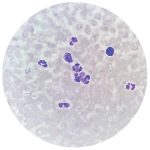The Death-Associated Protein
Prithvi Raj, PhD, assistant professor in the Department of Immunology at UT Southwestern Medical Center, Dallas, reported on his group’s research in targeted sequencing of 1,200 lupus patients, which has identified a region around the death-associated protein 1 (DAP1) regulatory haplotype.4 Haplotypes are a group of genes inherited together from a single parent, and Dr. Raj’s group is studying how the DAP1 regulatory haplotype potentiates autoimmunity, different DAP expressions and the endophenotype for autoimmunity.
Joann Sweasy, PhD, ensign professor of therapeutic radiology at Yale University School of Medicine, New Haven, Conn., reported on an association of a coding variant in MSH6, a gene part of the cellular machinery that repairs DNA, and the risk of SLE in an exome-wide association study.5 “We looked at a list of DNA repair genes, looking for coding variants,” Dr. Sweasy said. Her group has created a mouse model with this variant. Full characterization of the mice is still in process, but the researchers are producing anti-nuclear antibodies.
Larry Beresford is a medical journalist in Oakland, Calif.
References
- Alarcón-Riquelme ME. From genetics to genomics: Using multi-omic integrative analysis to reclassify lupus and other systemic autoimmune diseases. Abstract presentation at the 13th International Congress on Systemic Lupus Erythematosus, San Francisco. 2019 Apr 6.
- Niewold TB. Sub-phenotype mapping and functional studies to understand lupus genetics. Abstract presentation at 13th International Congress on Systemic Lupus Erythematosus, San Francisco. 2019 Apr 6.
- Shen N. Understanding the contributions of novel regulatory elements in human genome to lupus. Abstract presentation at 13th International Congress on Systemic Lupus Erythematosus, San Francisco. 2019 Apr 6.
- Raj P, Song R, Riediger L, et al. Targeted sequencing in 1,200 SLE patients reveal DAP1 regulatory haplotype that potentiate autoimmunity. Abstract presentation at 13th International Congress on Systemic Lupus Erythematosus, San Francisco. 2019 Apr 6.
- Sweasy JB, Meas R, Nititham J, et al. A mismatch repair genetic variant is linked to the development of lupus. Abstract presentation at 13th International Congress on Systemic Lupus Erythematosus, San Francisco. 2019 Apr 6.

